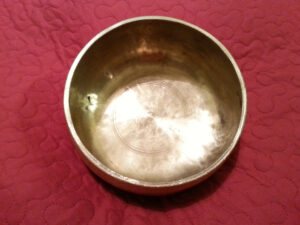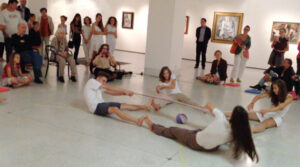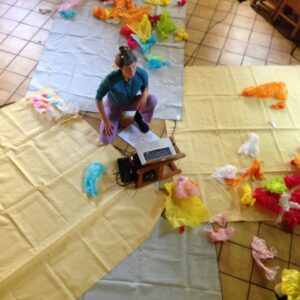Finding one’s place is a difficult task for all human beings, but especially so for someone who is ripped out of his or her familiar social environment due to being relocated to a retirement or nursing home or a hospital. Vitality and mental presence often diminish in sick and sensitive human beings. But the old and the sick want to be a part of life.
Where do I stand, where are the others? How do we relate to each other? How can we connect? What can increase the quality of life of all involved? How to find one’s way in new, unfamiliar surroundings? How to continue to exchange with those around, when we are unstable, go inwards and isolate ourselves?
Accompanying and caring for my mother through her journey of illness as well as my own journey with a chronic disease and impairments has confronted me with these topics on a very personal level. It awakened a curiosity and an inner wish to extend my involvement, and to continue to work with other people on these questions. This is how I came to do sound workshops with and for patients of psychiatric institutions and people with diabilities, body and voice-art workshops with teenagers in art spaces, performances with non-professionals and the like.
As an artist and sound engineer I have been experimenting with sound and its impact on people for the past 20 years, mainly through theatre, dance and music or other live performances. Trying to understand the needs of musicians on a stage or assisting artists in a creation has proved to be a rich background for my artistic, technical and human understanding, that I now wish to share.
Two of my big aims are enhancing the life quality of the sick and elderly, and to trigger and foster their own creative talent.
My approaches are centred around listening to sounds and music, making music, movement, bodywork and creative expression. It is important to me to work with the individuality of each participant, to create a sense of belonging within the group, and to enable every single person to sense their body, their voice and their surroundings. Music and sound affect the emotional body directly. We all know that situation: listening to an old tune not heard for a while, we get transported into a different time and space. All of a sudden, old memories appear, smells, situations, as real as years back.
Music and movement, or dance, allows for communication without words that reaches the body of even seriously ill persons. They help release tension and harmonise the breathing. They unite us with who we were and who we are. Music and movement facilitate individuals within the group to touch and to be touched, a sense that frequently is neglected. Playing a musical instrument engages practically every area of the brain at once, especially the visual, auditory and motor cortex. A structured practice in playing music strengthens those brain functions, allowing us to apply that strength to other activities.
Playing music requires fine motor skills which are controlled in both hemispheres of the brain. It also combines the linguistic and mathematical precision, involving the left brain hemisphere, with the innovative and creative processes of the right hemisphere. Beloved music from the past can act like a ‚quickener‘, especially for the mentally ill, as well as for persons with memory issues or who already have advanced pathologies such as Alzheimer’s disease or dementia. Music activates more parts of the brain simultaneously than any other activity. Making music in a group has also been shown to foster social bonding.
In practice, what do my workshops look like? I introduce the participants to body and voice exercises used by actors and performers, challenging the participants’ mobility and physical abilities. The workshops focus on making music together and on developing listening skills by listening to musical sources, field recordings and each other. Thematic sessions can be developed with participants and staff if desired. Besides the digital sound bank and sound effects that can be mixed there is a harp, a monochord, a hang drum, an austrian zither as well as easy percussive instruments, like maracas, bells, spoons, kalimbas, shakers, singing bowls and the like for collective music making, also integrating body and voice as important musical instruments. I like to emphasize collaboration and play in the group over the individual performance of each participant. Every now and then I invite other musicians or performers in order to widen the experience and to introduce more complex instruments.
Because of data protection, there is only a limited number of pictures available. Please get in touch with me, if you want to see or know more!
Lebenshilfe Wolfsberg (AT), Foyer de vie Résidence La Guérinière (FR), Etablissement public de santé mentale de Ville-Evrard (FR), Alice Springs (AU), National Gallery Prague (CZ)




























